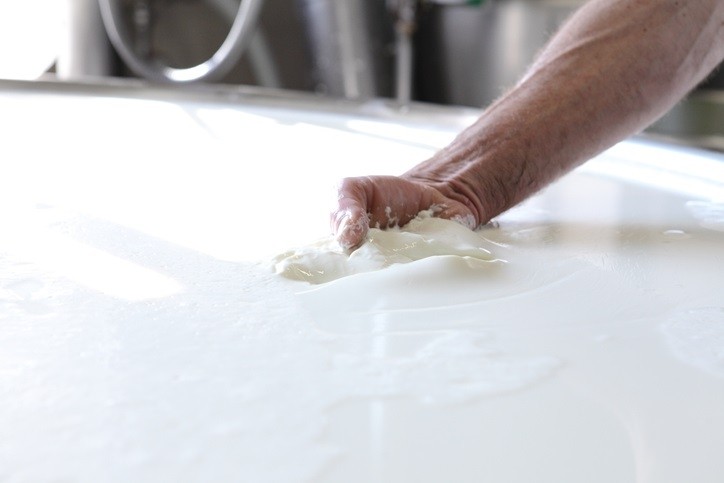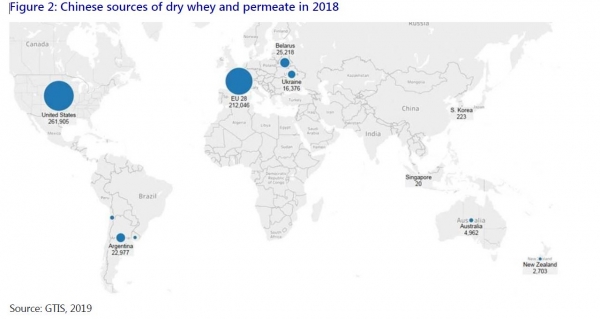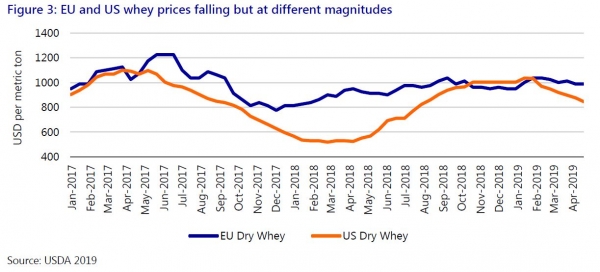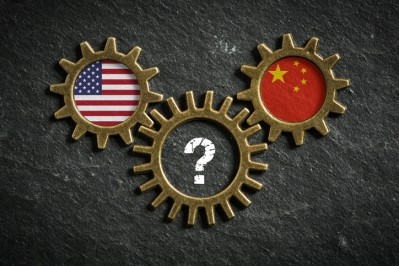ASF: Whey suppliers to feel the brunt of pig culling in China

However, there is another knock-on effect from that culling, lower feed demand. China’s hog industry is a large consumer of dairy-derived animal feed, and the forecast reduction of 150m-200m pigs in China due to ASF outbreak represents an estimated 54,500mt to 72,500mt decrease in lactose demand in piglet feed, said Rabobank’s global dairy strategist Mary Ledman.
“The ASF situation in China has had a double impact on US whey, permeate, and lactose exporters as the world’s largest market for dairy-derived animal feed shrinks and US competitiveness erodes due to the trade war-induced tariff," she added.
The report illustrates how a lower number of hogs will result in a lower demand for feed, and sees negative price implications for key dairy ingredients: milk permeate, whey permeate, whey powder, and lactose, all used in swine feed.
Prior to the ASF entrance to that market, China slaughtered nearly 700m pigs annually, which on average, consumed 400g of lactose over their lifetime – an estimated 250,000 metric tons of lactose, which is a key feed ingredient in the post-weaning piglet diet, noted the publication.
Dry whey consists of about 70% lactose, while whey permeate and milk permeate contain about 80% lactose.
The report shows that between 2016 and 2018, China imported, on average, about 530,000 metric tons of whey and permeate and 84,000 metric tons of lactose annually for both feed and food use. Rabobank estimates that over 50% of the whey, permeate and lactose imports were used in animal feed.
“The first signs of lower YOY Chinese whey and permeate imports in 2H 2018 appeared in November 2018, and the decline expanded to 27% YOY in March 2019, according to global trade data. China’s whey and whey permeate imports from the US were hit particularly hard, falling 60% compared to the prior year.”
Trade war
It is not just ASF affecting US whey exports to China. The trade war between Beijing and Washington is also undermining US competitiveness in that regard. European suppliers have been benefiting, finds the industry note.
China’s imports of dry whey and permeate contracted by 16% in Q1 2019 to 115,323 metric tons, and its imports of lactose retreated by 5% to 21,379 metric tons in the same period. Despite the declining market size, EU28 exports of dry whey and permeate rose 5% YOY to 50,576 metric tons capturing a 44% market share, but US whey and permeate exports declined by YOY 53% to 35,219 metric tons, representing a 35% drop in market share, according to the report.
Likewise, during the same period, China’s imports of US lactose retreated by 24% to 14,341 metric tons as imports from the EU28 rose to 6,239 metric tons or 81% above last year. Without a resolution in the tariff tiff, or dramatic price reductions, the US is set to lose out further to the EU in a shrinking Chinese market for dairy feed ingredients, said the analysts.
Price slide
International whey powder prices have declined by 15%-20% since January and lactose prices have retreated by nearly 10%; permeate prices have felt the brunt of the fall in demand from Chinese buyers, with prices dropping by 50% since February, according to industry data compiled by Rabobank.
Publically-available EU and US dry whey prices illustrate price weakness and convergence since early 2019, said the analysts. “This many only be the start of weaker dry whey and lactose prices. CME dry whey future prices have moved marginally lower from above US$850/metric ton, an indication that perhaps the futures market has yet to absorb the gravity of the situation. Yet USDA spot prices for dry whey and lactose used in animal feed are trading below US$550/metric ton.”
Rabobank said it is its view that the impact of ASF will not be short-lived and that it may take years to replenish the hog numbers that have been lost.
“Pricing dynamics across the whey complex will be a key watch for many dairy manufacturers over the coming period.”
New feed, export markets
Further downward pricing pressure is anticipated as a result of significantly weakened demand from the Chinese swine sector, forcing manufacturers to find new outlets for their products in food-grade applications, in other animal feed sectors, and new export destinations, concluded the team.
Lactose and dry whey prices contribute to farm-level milk prices in parts of Europe and the US, which may cast a shadow on the milk price outlook, they added.

















